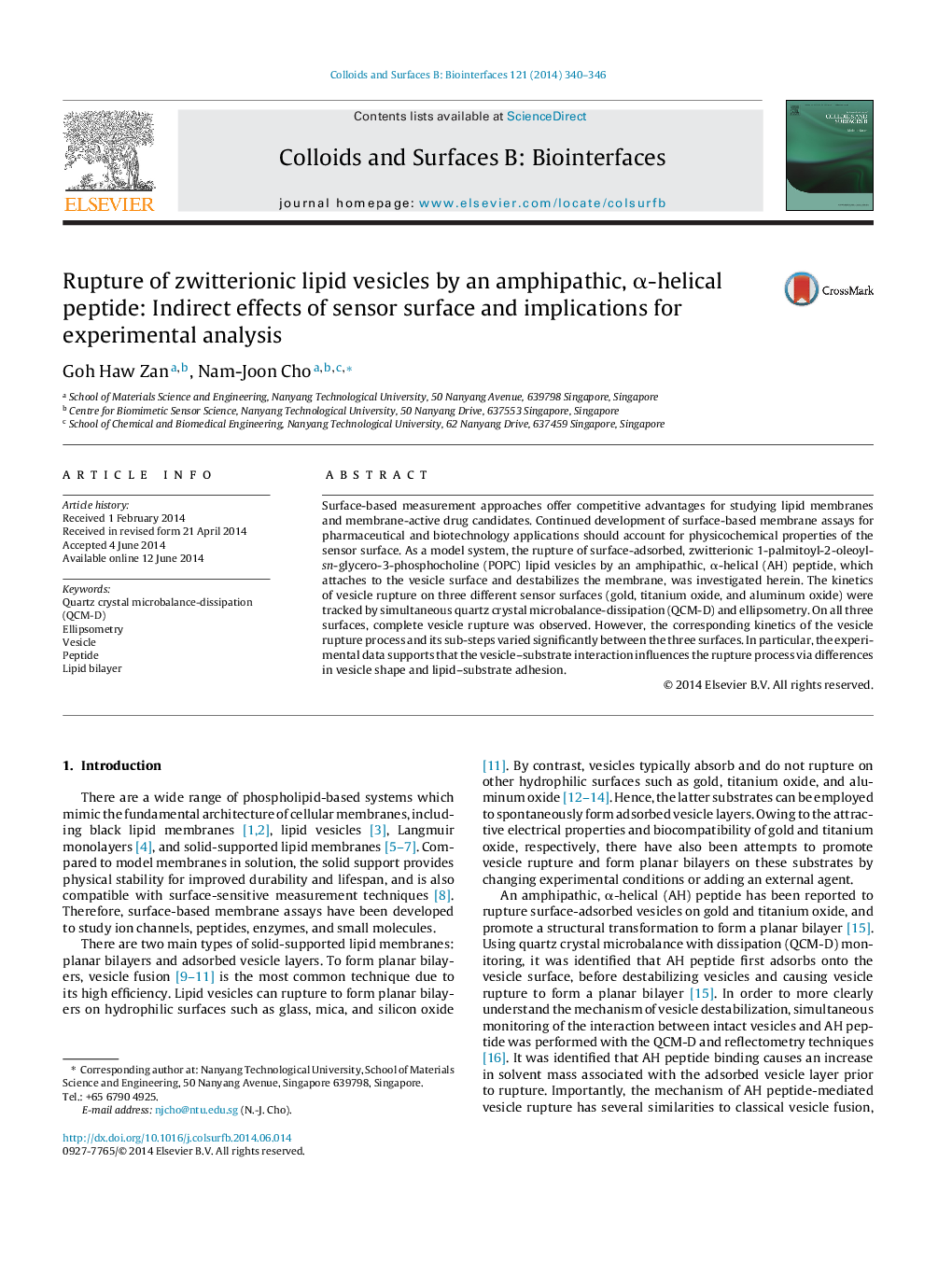| Article ID | Journal | Published Year | Pages | File Type |
|---|---|---|---|---|
| 599641 | Colloids and Surfaces B: Biointerfaces | 2014 | 7 Pages |
•Indirect effects of sensor surface on a surface-based vesicle assay are reported.•Kinetics of vesicle rupture by a peptide varied depending on the surface.•Sensor surface influenced vesicle shape and lipid–substrate adhesion.•Such assays should account for physicochemical properties of the sensor surface.
Surface-based measurement approaches offer competitive advantages for studying lipid membranes and membrane-active drug candidates. Continued development of surface-based membrane assays for pharmaceutical and biotechnology applications should account for physicochemical properties of the sensor surface. As a model system, the rupture of surface-adsorbed, zwitterionic 1-palmitoyl-2-oleoyl-sn-glycero-3-phosphocholine (POPC) lipid vesicles by an amphipathic, α-helical (AH) peptide, which attaches to the vesicle surface and destabilizes the membrane, was investigated herein. The kinetics of vesicle rupture on three different sensor surfaces (gold, titanium oxide, and aluminum oxide) were tracked by simultaneous quartz crystal microbalance-dissipation (QCM-D) and ellipsometry. On all three surfaces, complete vesicle rupture was observed. However, the corresponding kinetics of the vesicle rupture process and its sub-steps varied significantly between the three surfaces. In particular, the experimental data supports that the vesicle–substrate interaction influences the rupture process via differences in vesicle shape and lipid–substrate adhesion.
Graphical abstractFigure optionsDownload full-size imageDownload as PowerPoint slide
